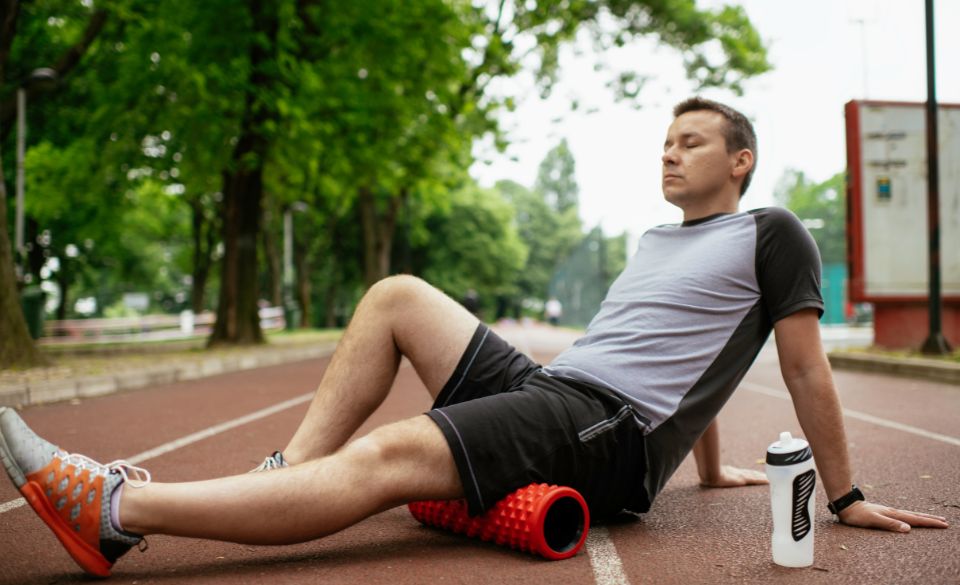
Rolling Out the Benefits: What is SMR in Fitness?
Page Contents
Are you ready to add a new dimension to your fitness routine? Let’s talk about SMR or Self-Myofascial Release. This type of stretching is a total game-changer when it comes to improving your overall performance, reducing soreness, and increasing your flexibility.
What is SMR in Fitness?
SMR stands for Self-Myofascial Release, and it’s a type of stretching that focuses on releasing the fascia, which is a layer of connective tissue that surrounds your muscles. When your fascia gets tight or knotted, it can cause pain, stiffness, and limited mobility. SMR helps to loosen up the fascia, which can improve your range of motion, reduce soreness, and increase overall performance.
How does SMR work?
SMR or Self-Myofascial Release works by using a foam roller or other SMR tool to apply pressure to specific areas of your body. By rolling over these areas, you can release tension and trigger points, which are areas of muscle that feel tight or painful.
The pressure applied during SMR helps to break up adhesions or knots in the fascia, which is the layer of connective tissue that surrounds your muscles. When the fascia gets tight or knotted, it can cause pain, stiffness, and limited mobility. SMR helps to loosen up the fascia, which can improve your range of motion, reduce soreness, and increase overall performance.
SMR can also help to break up scar tissue, which can improve your flexibility and overall range of motion. By breaking up scar tissue, SMR can help to improve circulation and reduce the risk of injury.
In summary, SMR works by applying pressure to specific areas of your body using a foam roller or other SMR tool, which helps to release tension, trigger points, and adhesions in the fascia. This, in turn, can improve your flexibility, reduce soreness, and increase your overall performance.
Studies that Support SMR
Several studies have shown that SMR can have significant benefits for athletes and fitness enthusiasts alike. Here are a few examples:
1. A study published in the Journal of Strength and Conditioning Research found that SMR can improve flexibility and range of motion in the hip and knee joints. The study concluded that SMR is an effective technique for increasing flexibility in healthy, active adults.
2. Another study published in the International Journal of Sports Physical Therapy found that SMR can reduce muscle soreness and improve muscle function after exercise. The study concluded that SMR is a useful technique for improving recovery and reducing muscle soreness in athletes.
3. A third study published in the Journal of Athletic Training found that SMR can increase range of motion and reduce muscle soreness in the quadriceps muscle. The study concluded that SMR is an effective technique for improving muscle function and reducing muscle soreness in athletes.
In summary, these studies suggest that SMR can be an effective technique for improving flexibility, reducing muscle soreness, and improving muscle function in athletes and active individuals. However, more research is needed to fully understand the benefits of SMR and how it can be used to improve athletic performance.
How to Incorporate SMR into your Fitness Routine?
Incorporating SMR into your fitness routine is simple! Here are some steps to get you started:
1. Choose your SMR tool: The most common SMR tool is a foam roller, but there are also other tools like massage balls and sticks that you can use.
2. Warm-up: Before you start SMR, it’s important to warm up your muscles. You can do some light cardio or dynamic stretching to get your blood flowing.
3. Identify target areas: Identify the areas of your body that feel tight or sore, and focus on these areas during SMR.
4. Apply pressure: Place the SMR tool under the targeted area and use your body weight to apply pressure. Roll slowly and steadily over the area, focusing on any knots or trigger points.
5. Breathe: As you roll, focus on your breath. Take deep breaths in and out to help relax your muscles.
6. Spend 1-2 minutes per area: Spend 1-2 minutes on each targeted area, rolling slowly and steadily.
7. Cool-down: After you’ve finished SMR, take a few minutes to stretch and cool down.
You can incorporate SMR into your pre-workout routine to help warm up your muscles and improve mobility. Or, you can use SMR after your workout to help reduce muscle soreness and improve recovery. It’s also a good idea to use SMR on rest days to help prevent injury and maintain flexibility.
Benefits of SMR
There are several benefits to incorporating SMR (Self-Myofascial Release) into your fitness routine. Here are some of the benefits of SMR with studies to support them:
Improves Flexibility: SMR has been shown to improve flexibility and range of motion in joints. A study published in the Journal of Athletic Training found that SMR significantly increased range of motion in the quadriceps muscle.
Reduces Muscle Soreness: SMR has been shown to reduce muscle soreness after exercise. A study published in the International Journal of Sports Physical Therapy found that SMR reduced muscle soreness and improved muscle function in athletes.
Enhances Recovery: SMR can enhance recovery after exercise. A study published in the Journal of Strength and Conditioning Research found that SMR improved recovery time and helped to maintain muscle function after exercise.
Increases Athletic Performance: SMR has been shown to increase athletic performance. A study published in the Journal of Sports Sciences found that SMR increased vertical jump height and power output in athletes.
Reduces Injury Risk: SMR can help reduce the risk of injury by improving flexibility and reducing muscle tightness. A study published in the Journal of Bodywork and Movement Therapies found that SMR can be an effective way to prevent injuries in athletes.
In conclusion, incorporating SMR into your fitness routine can have several benefits, including improved flexibility, reduced muscle soreness, enhanced recovery, increased athletic performance, and reduced injury risk. These benefits are supported by various studies, making SMR a valuable addition to any fitness routine.


